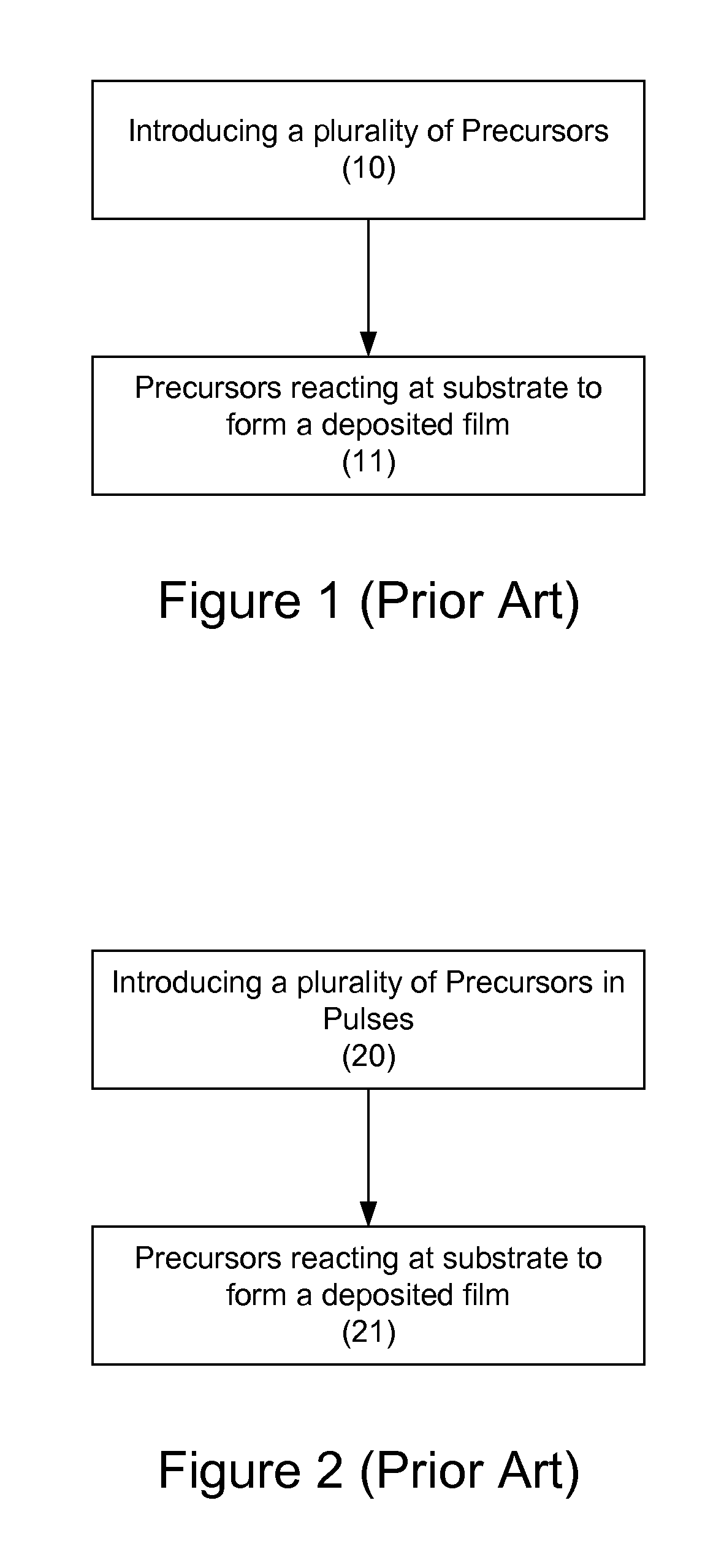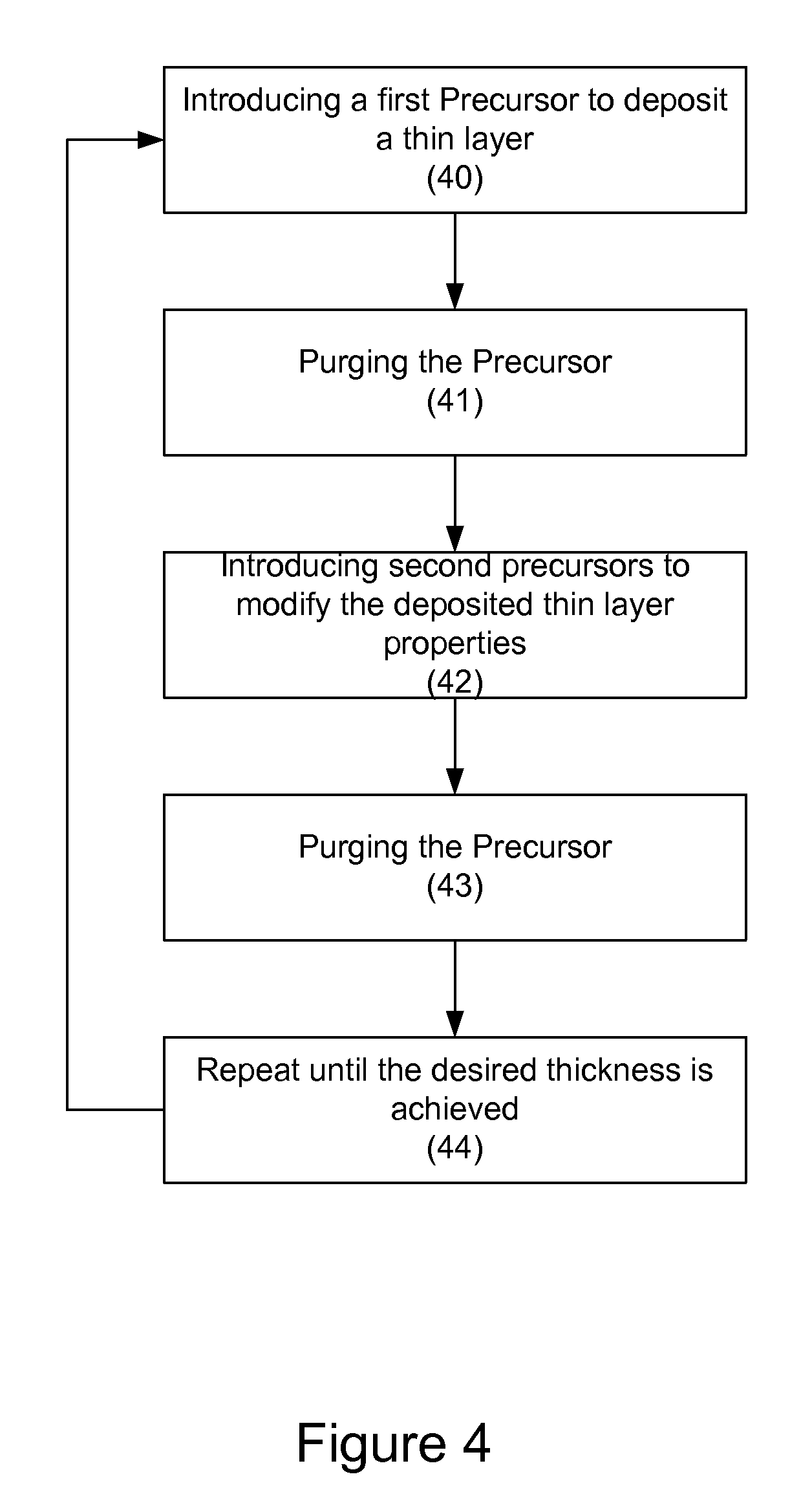Nanolayer deposition process for composite films
a composite film and nanolayer technology, applied in the field of thin film processing and semiconductor thin film processing, can solve the problems of difficult to achieve conformal films in pvd equipment, cvd typically requires high temperature deposition and may not be compatible, and achieves the effect of less initial surface preparation and simple operation
- Summary
- Abstract
- Description
- Claims
- Application Information
AI Technical Summary
Benefits of technology
Problems solved by technology
Method used
Image
Examples
Embodiment Construction
[0046]The present invention provides a hybrid deposition process of CVD and ALD, called NanoLayer Deposition (NLD). A co-pending application “Nanolayer thick film processing system and method” U.S. patent application Ser. No. 09 / 954,244, filed Sep. 10, 2001 and published Mar. 13, 2003, Pub. No. 20030049375 A1, now U.S. Pat. No. 6,756,318, issued Jun. 29, 2004 has been disclosed and is hereby incorporated by reference in their entirety.
[0047]In one aspect of the invention, the present invention method to deposit a thin film on a substrate comprises the steps of:
DEPOSITION STEP (a). introducing a first plurality of precursors to deposit a thin film on a substrate, the deposition process being not self-limiting;
PURGING /
[0048]REPLACEMENT STEP (b). purging the first precursors; and
TREATMENT STEP (c). introducing a second plurality of precursors to modify the deposited thin film, the second plurality of precursors having at least one precursor different from the first plurality of precurs...
PUM
| Property | Measurement | Unit |
|---|---|---|
| Composition | aaaaa | aaaaa |
Abstract
Description
Claims
Application Information
 Login to View More
Login to View More - R&D
- Intellectual Property
- Life Sciences
- Materials
- Tech Scout
- Unparalleled Data Quality
- Higher Quality Content
- 60% Fewer Hallucinations
Browse by: Latest US Patents, China's latest patents, Technical Efficacy Thesaurus, Application Domain, Technology Topic, Popular Technical Reports.
© 2025 PatSnap. All rights reserved.Legal|Privacy policy|Modern Slavery Act Transparency Statement|Sitemap|About US| Contact US: help@patsnap.com



